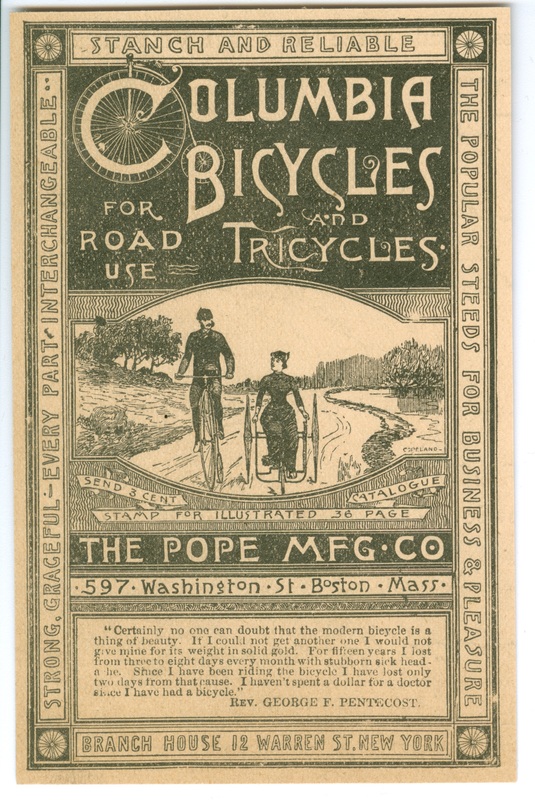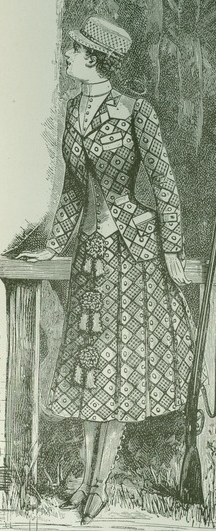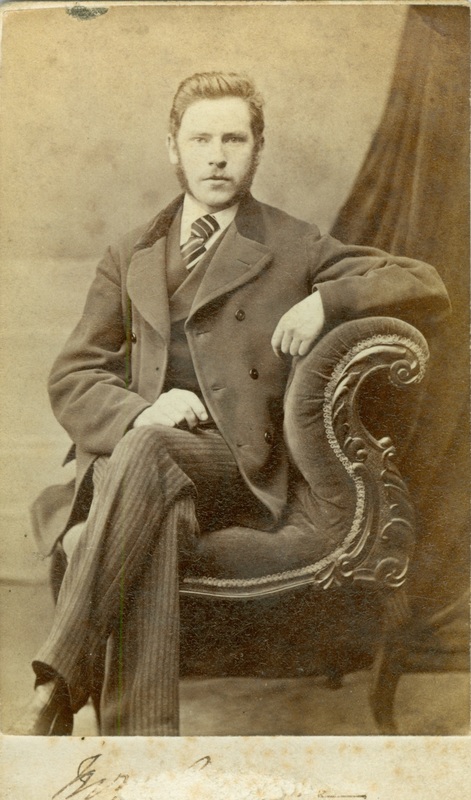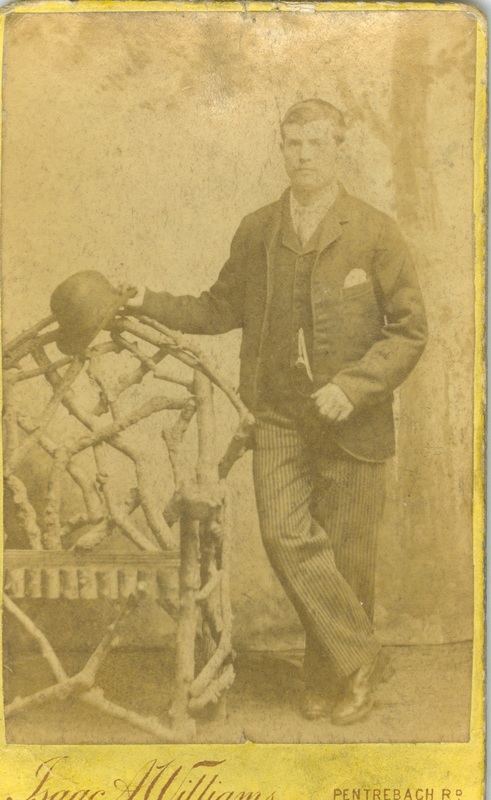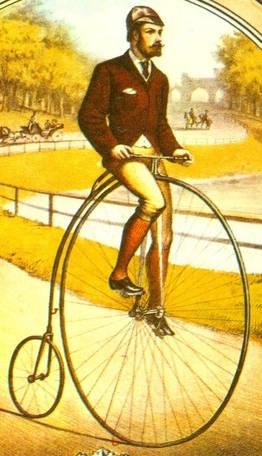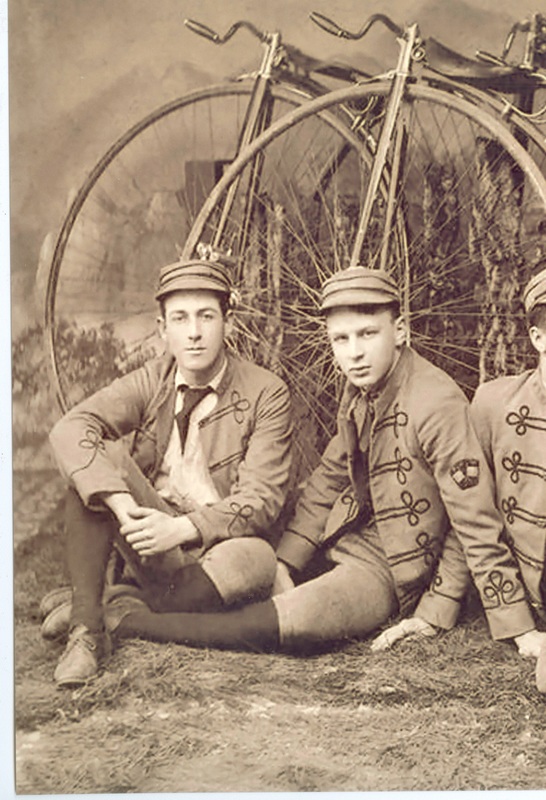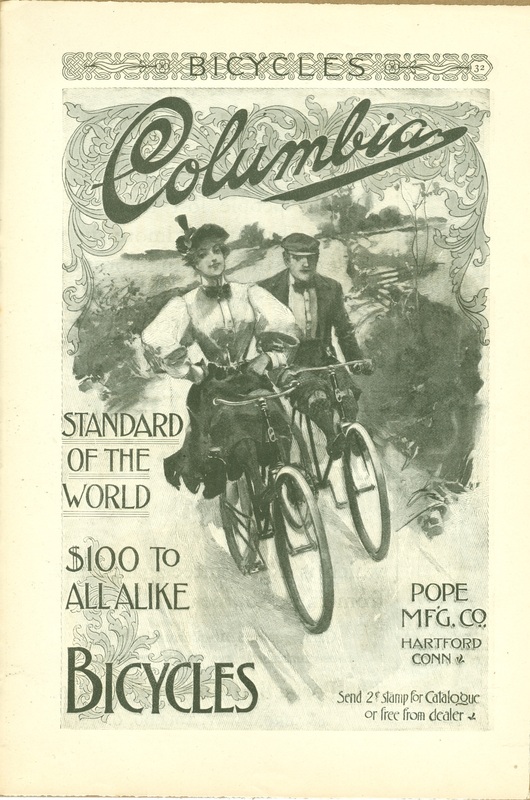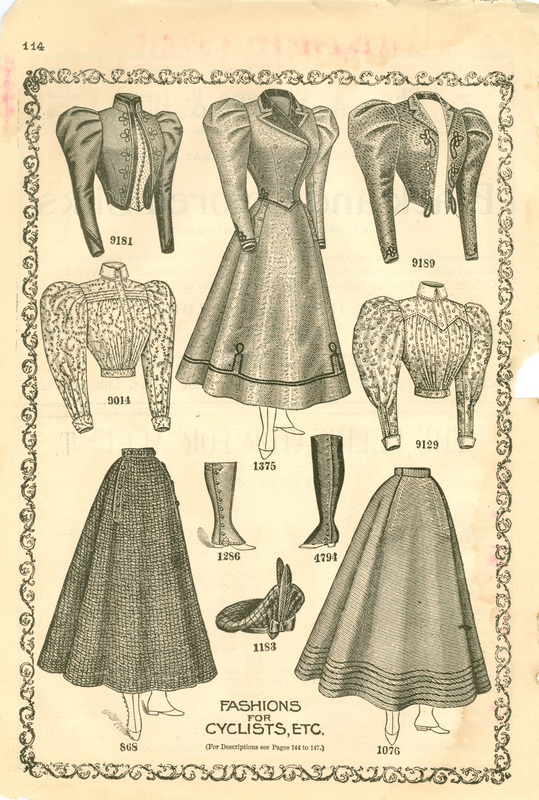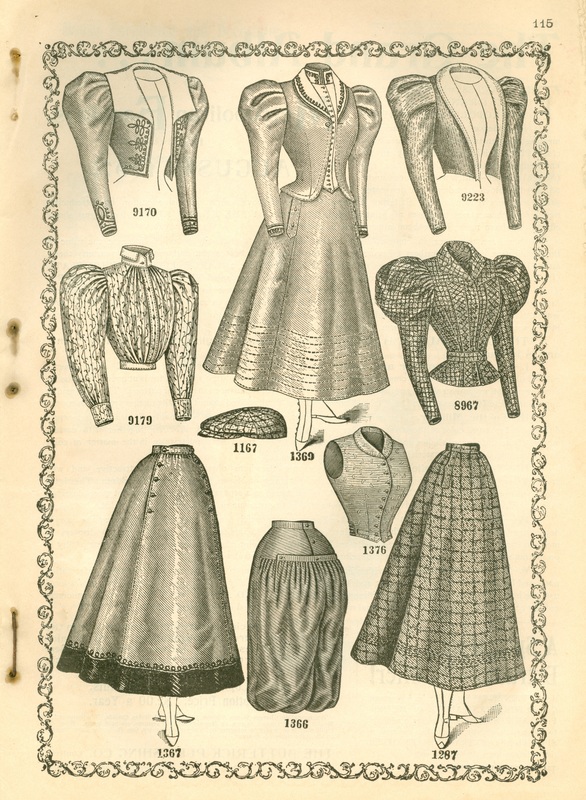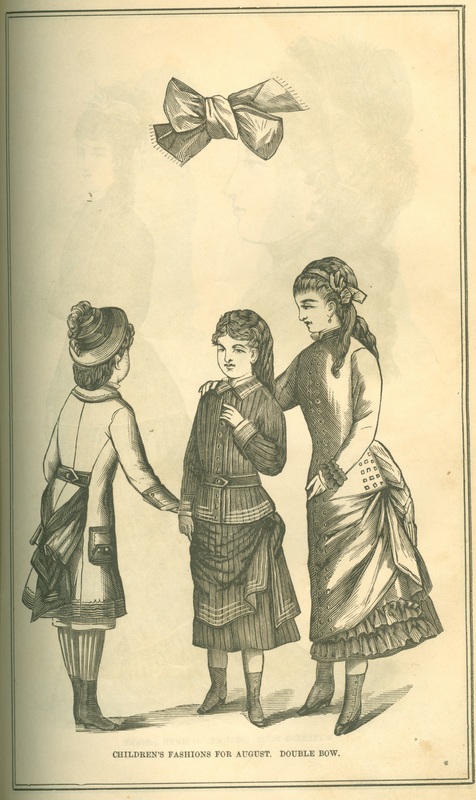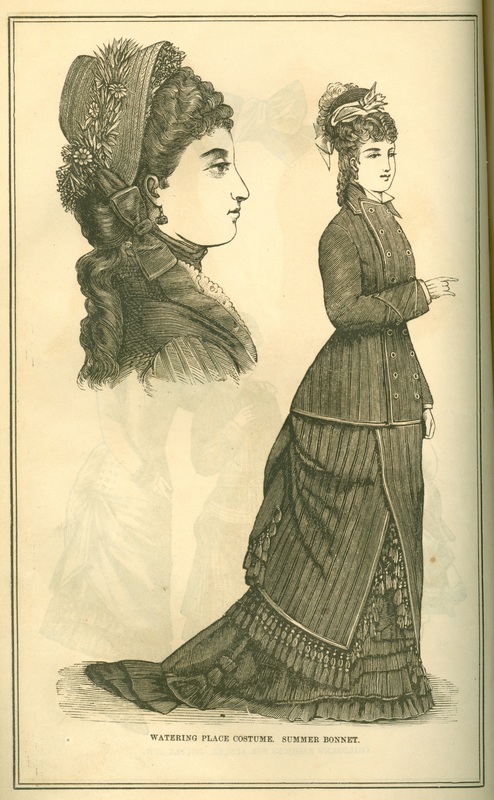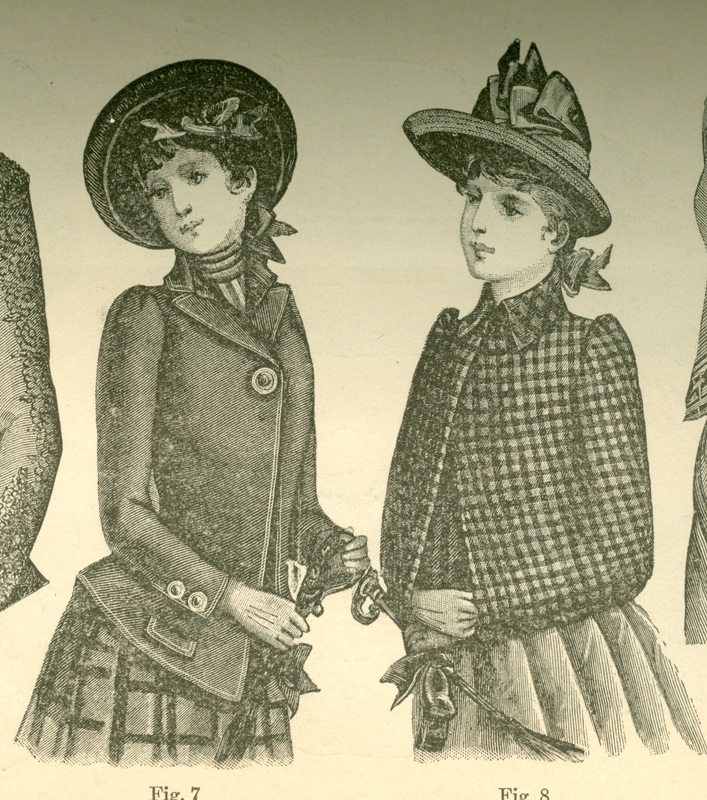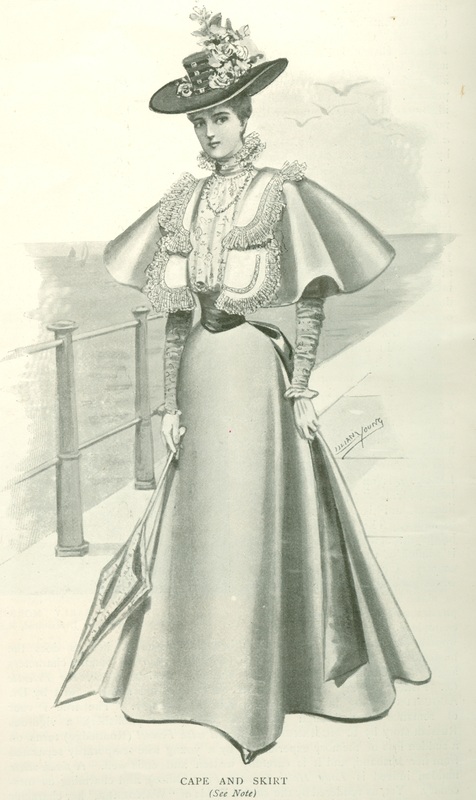Learning Activities
3-4 Grade
Cycling
Read "Rosalind A-Wheel" (1896)
Now answer the following questions:
1. How did Ethel get the money to buy a bicycle?
2. Why did she run away from home?
3. Why did the other cyclists tell Ethel she shouldn't sleep under the tree?
4. What did Mr. Darrington notice about Ethel's bicycle?
5. Did Ethel forgive Mr. Darrington for making her go home?
This is an advertisement from the 1880s for a high wheel bicycle. This was the most common bicycle of the time: it was so common, when people said "bicycle" everyone understood they meant this kind of bicycle! It was also called the ordinary bicycle.
How is it different from a modern bicycle? How is it the same?
How is it different from a modern bicycle? How is it the same?
This picture shows two men coasting on their high wheel bicycles. High wheel bicycles are a type of bicycle called a fixed gear. This means that whenever the wheel is moving, the pedals are spinning. Question: Why do you think they put their legs over their handlebars?
(Answer: They put their legs over their handlebars to keep them out of the way of the spinning pedals. Also, this way if they fall off their bicycles, they land on their feet.)
***
(Answer: They put their legs over their handlebars to keep them out of the way of the spinning pedals. Also, this way if they fall off their bicycles, they land on their feet.)
***
***
Cycling clothes:
Do people always wear the same clothes for everything they do?
Do you wear the same clothes to go to school that you wear to go to the beach? Would you wear the same clothes to someone's wedding that you wear when you play sports?
What do cycling clothes look like today?
Cycling clothes:
Do people always wear the same clothes for everything they do?
Do you wear the same clothes to go to school that you wear to go to the beach? Would you wear the same clothes to someone's wedding that you wear when you play sports?
What do cycling clothes look like today?
Look at this picture from 1887 of a woman walking with two little girls. (This picture shows walking around clothes—not cycling clothes.) How is the woman's dress different from the girls' dresses?
[The girls' dresses are shorter than the grown woman's dress.]
Now look at these pictures of grown women's cycling clothes from 1890. How do their skirts remind you of the skirts on the little girls in the other picture?
[Answer: The cycling skirts are about the same length as the little girls' dresses in the other picture. (They are shorter than a grown woman would have usually worn when not cycling.)]
[Answer: The cycling skirts are about the same length as the little girls' dresses in the other picture. (They are shorter than a grown woman would have usually worn when not cycling.)]
Look at these photos (below) of men from the 1880s, wearing the sort of clothes they would have worn walking around town. These pictures show walking around clothes—not cycling clothes.
Compare the men's "walking around clothes" above to these men's cycling clothes from the same years. Do the men's cycling clothes have anything in common with the women's cycling clothes?
[Answers: The men's pants are short for cycling, just like the women's skirts are short for cycling. The women's cycling caps follow the model of some men's cycling caps.]
[Answers: The men's pants are short for cycling, just like the women's skirts are short for cycling. The women's cycling caps follow the model of some men's cycling caps.]
This is a bicycle advertisement from the 1890s.
How are the bicycles different from the high wheel cycles of the 1880s?
Who do you think is the better rider in this picture?
How are the bicycles different from the high wheel cycles of the 1880s?
Who do you think is the better rider in this picture?
***
***
Foods
What kinds of foods do you think people ate back in the 1880s and 1890s?
Now look at the pictures and advertisements here: Victorian Foods. Talk to your friends or parents about them: did any of them surprise you?
Now look at the pictures and advertisements here: Victorian Foods. Talk to your friends or parents about them: did any of them surprise you?
***
Extra pictures / coloring sheets
From Godey's October 1889, p. 335-336: "Figure 7: Jacket for girl of fourteen, made of dark navy blue cloth, bound with black and black buttons.
Figure 8: Small mantlet for girl of thirteen years, made of checked cloth."
Figure 8: Small mantlet for girl of thirteen years, made of checked cloth."
***
Some external links to materials for enhancing learning:
Everyday Life As A Learning Experience —an article Sarah wrote for the educational site Commonlit.org:
www.commonlit.org/texts/everyday-life-as-a-learning-experience_
***
Suggestive Programs for Special Day Exercises
(Lesson plans for holidays, from 1898—free download from Google books)
***

